I’ll be honest, when I first heard about Yarbo, I wasn’t sure what to think. A modular yard robot that snow blows, mows the lawn, and even clears leaves? That sounded ambitious, to say the least. But the idea stuck with me: one machine, year-round use, with swappable modules for different tasks. No more juggling separate seasonal machines and no more winter storage shuffles? I decided to try it out.
The Yarbo team sent me pretty much all of the major components back in January and I’ve been testing them out over the last few months. As the weather has finally given way to more than a few dry and warm days in a row, I’ve been able to try just about everything now.
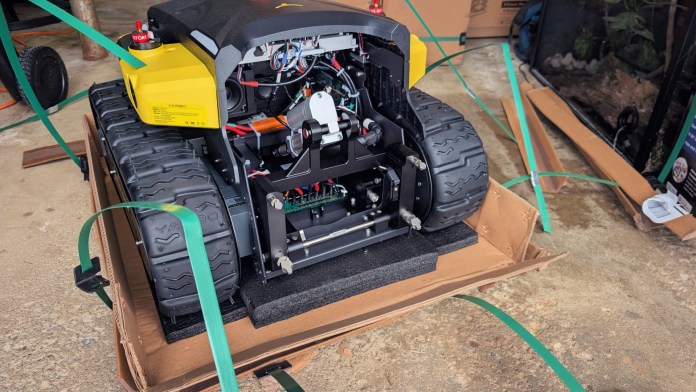
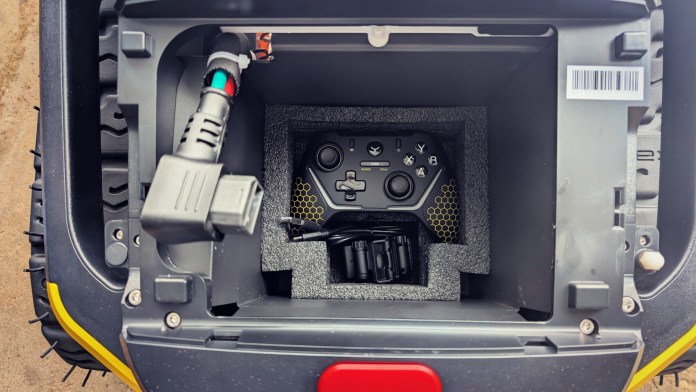
Yarbo calls it “the world’s first modular yard robot,” and while that kind of marketing usually makes me skeptical, in this case, it’s not wrong. At least from what I have seen come across my path.
The Core is the brain and body, and it works with attachments that transform it into a snow blower, lawn mower, and blower. And with more modules arriving now and in the future, the system feels like an investment that could grow with one’s needs.
With Yarbo, a single smart system replaces seasonal machines, cuts down on upkeep time, and grows with your needs. it’s a smart investment in long-term yard care.
Out of the box, you get the robot itself, a docking station, rechargeable battery, and a remote control (think Bluetooth Playstation controller) for manual operation.
It’s an appealing concept if you’ve ever looked at your garage or shed and thought, “Why do I own so many machines for outdoor upkeep?” The Yarbo Core tackles that question head-on, and after spending real time with it over a few long and cold winter months and a few wet spring ones, I’ve got some feedback to share.
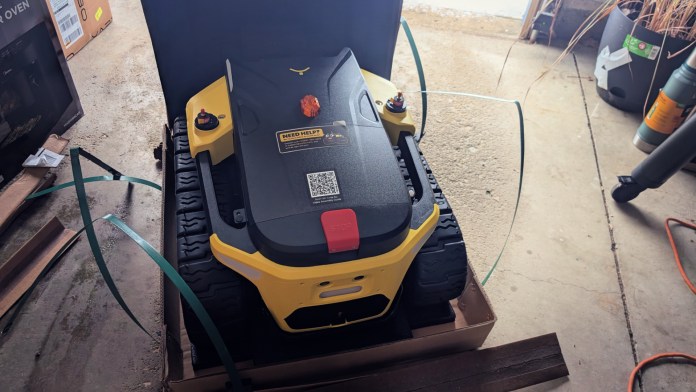
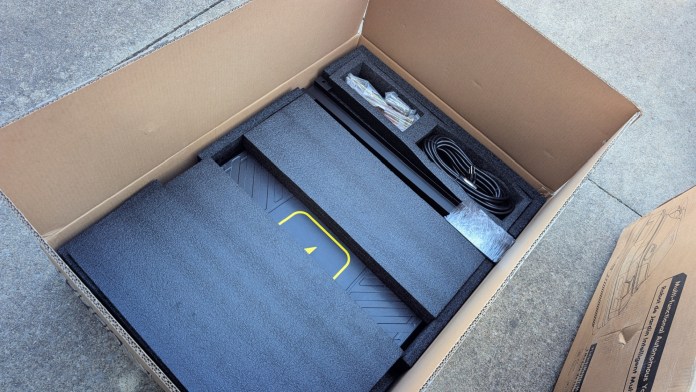
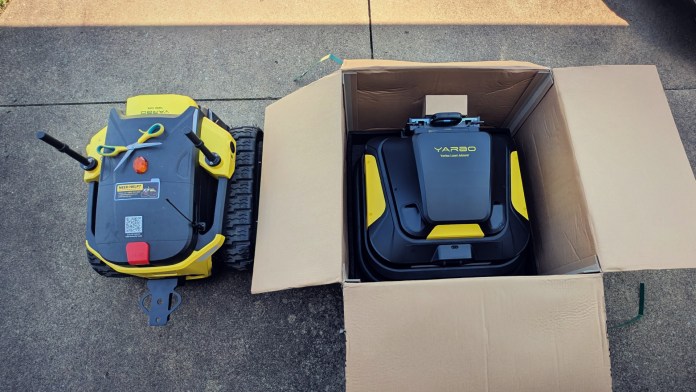
My goal is to return later with a follow-up piece that tackles longer term usage, build quality, general performance, and other modules. I’m thinking maybe something later this summer, perhaps.
Build Quality That Feels Serious
The Yarbo Core isn’t a toy, it’s a hefty, tank-like machine that commands presence. At over 130 pounds, it’s built for stability, and that comes through especially in the snow. It rolls on a tracked tank-tread like wheel system, which helps it grip slippery or uneven surfaces, and handles up to 35% inclines without complaint. It’s rated IPX5 for water resistance, so it doesn’t shy away from wet conditions or unpredictable weather.
All of the modules I’ve spent time with feel thoughtfully engineered. The Snow Blower Module is a beast in its own right, over 75 pounds with a two-stage blower, adjustable chute, and serious snow-throwing power.
The Lawn Mower Module, which I hope to fully utilize in the very near future, is lighter but wider, with a front-mounted cutting deck, dual discs, and a torsion-flex frame that lets it adapt to bumps and slopes.
The Blower Module, which just recently arrived, doesn’t just look like a leaf blower on steroids, it is one, with air velocity up to 190 MPH and 760 CFM. It’s surprisingly strong.
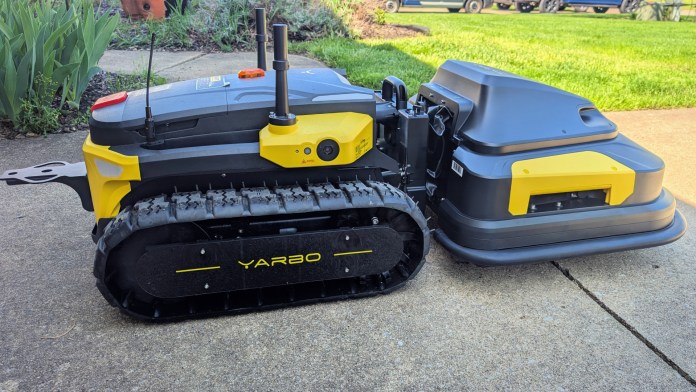
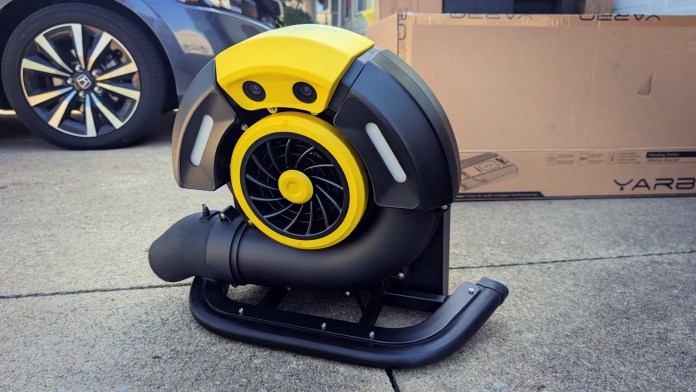
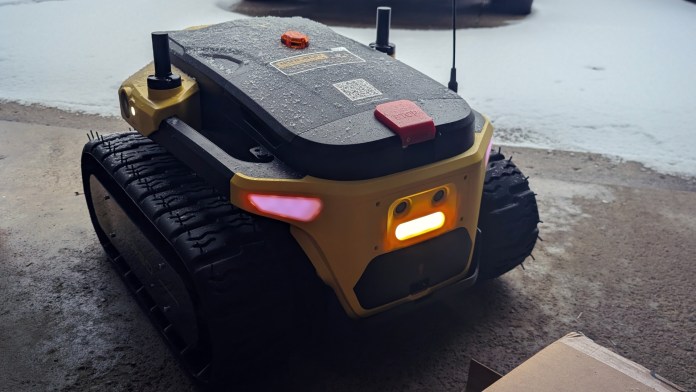
I did notice one thing about the system early on: swapping modules is a bit of a chore, especially solo. They’re heavy, and there are wires to manage.
Smart, Capable, and (Mostly) Autonomous
At the heart of the Yarbo Core is a robust navigation system. It uses Stereo Vision, Odometry, and dual antennas to navigate without boundary wires, and it holds its position even when GPS gets sketchy, like under dense trees or near buildings. Obstacle detection is proactive, pausing the robot if anything gets in the way. It’ll return to the dock and recharge itself when needed, and you can set boundaries and tasks through a smartphone app.
There’s even a security mode built in. Using front and side cameras, Yarbo can patrol your yard and stream real-time footage to your phone. It’s a bit of a novelty, but also a cool crossover between yard care and smart home security.
Each module adds its own twist. The Snow Blower can toss snow up to 40 feet, and it handles up to a foot of accumulation without issue. The Lawn Mower promises up to six acres of coverage and supports multi-zone planning, so you can map complex yards with ease.
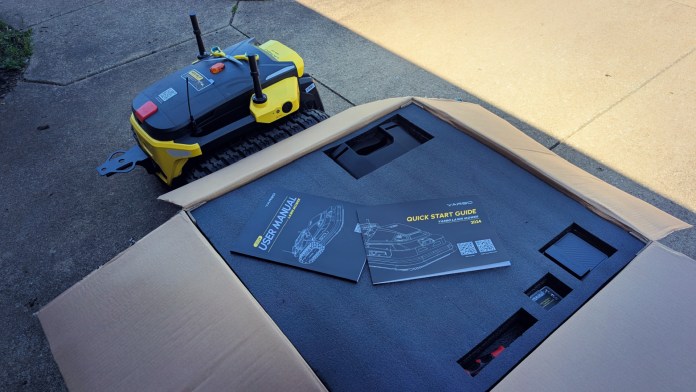
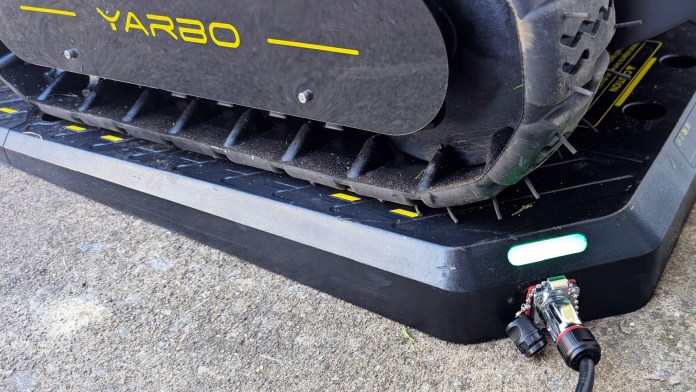
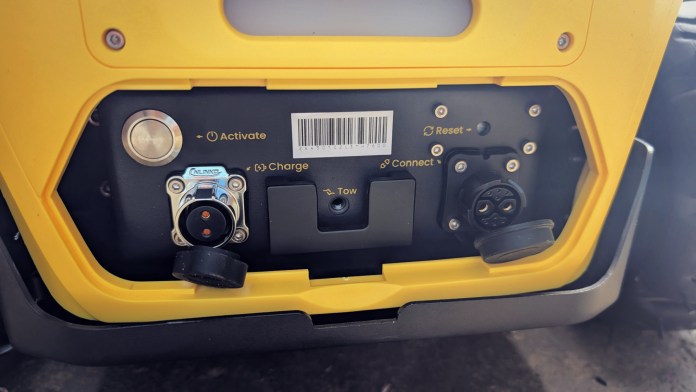
The Setup Process: Not Plug-and-Play
Let’s talk about setup, because this isn’t a toaster oven. There’s a fair amount of time and work that you’ll need to invest. You’ll need to mount the RTK antenna somewhere with a clear view of the sky, ideally on a pole. Then, there’s the wiring, Wi-Fi setup, yard mapping, firmware updates. Suffice it to say, it’s a bit of a project. If you’re not comfortable with light DIY and tech troubleshooting, you’ll want a helping hand.
In fact, I avoided the full setup for a few months because it was so cold and snowy here in Ohio. I opted instead to use the wireless controller and/or my phone’s app to manually run the Snow Blower and plow.
It was not until early April that I set up the docking station and did the mapping of my yard. And as I look ahead on my calendar, I’ll have to make some adjustments in the next month. My flower and mulch bed is being reshaped so I’ll ultimately end up with more lawn to cover.
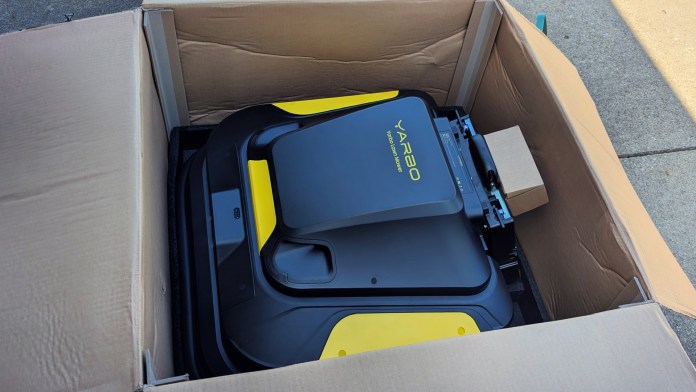
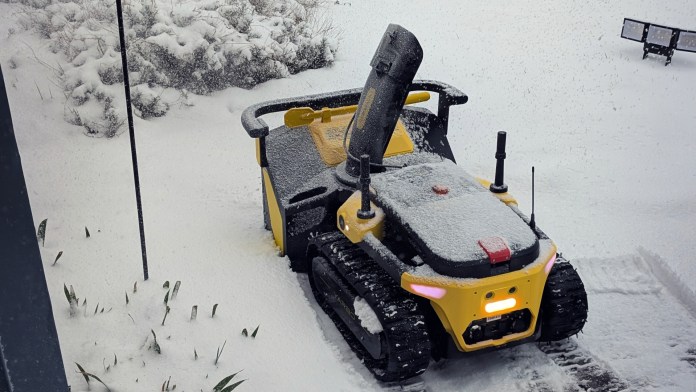
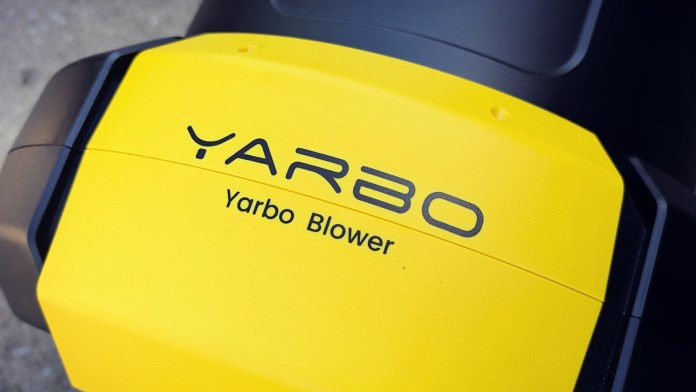
Mapping your yard in the app is straightforward, but it hinges on the antenna’s position and you’ll need to have the docking station/wireless charger in place first. Move either later, and you’ll potentially need to remap everything. This amounts to more or less manually driving the Yarbo around your property’s edges and creating work zones.
Much like you’ll encounter with a quality robot vacuum, you can create no-go zones or areas to avoid. Similarly, you can create sections of yard so that you can focus on one area more than others. Say, for instance, you want to keep that nice curb appeal and have the Yarbo cut grass every other day while the back yard could get spaced out a little longer.
I found that the module swap process, while conceptually simple, requires some muscle and patience. The snow module in particular is heavy and awkward to align precisely. And the mower module, while lighter, has some clips you’ll have to lock into place.
That said, once the system is up and running, it’s pretty smooth sailing. I did have to reboot the Core and data center once to fix a firmware hiccup, and snow buildup on the docking station created one failed docking event. But overall, the tech has held together well thus far.
I was surprised at the customization features and settings for each module. As wonky as it might be to operate with your phone or controller, you can adjust heights for grass or snow clearing, direction for snow blowing, patterns for mowing the grass, and more. I suspect that the more time I spend with this unit over the summer, the more I’ll come to enjoy its capabilities.
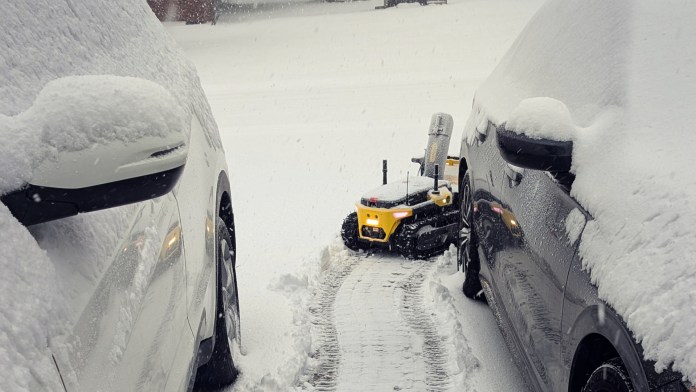


Real-World Performance
The Snow Blower impressed me quite a bit and it made my neighbors jealous to be sure. It chewed through light and moderate snow with no problem, and even handled snow berms at the edge of my driveway that were left by plows. Wet, slushy snow did gum up the auger a bit, but that’s a common challenge for any blower.
One of my favorite early moments with the Yarbo Snow Blower was sitting in my living room, coffee in hand, and watching it clear the driveway, all with me barely lifting a finger. I hadn’t even finished the full installation yet. No mapping, no geofencing. Just me using the app, tapping a few buttons on my phone, and driving like I was playing Asphalt 9.
It was surreal watching this tank-like robot do the hard work outside while I stayed warm and dry inside. That little glimpse of hands-off winter maintenance? Totally sold me on the potential. And I know that next winter things will be even better with the automation getting tighter and cleaner lines without me standing guard. I look forward to a mapped out and fully customized work schedule.
As for the Blower Module, it’s powerful. It makes quick work of leaf piles and debris, especially with the follow mode turned on. It’s also quieter than expected, and Yarbo says the Lawn Mower tops out around 60 dB which is about as loud as a conversation. That’s a win in my book. In fact, the first time I had the blades going, I was talking to my neighbor across the yard. They had no idea the Yarbo was powered on let alone the blades spinning.
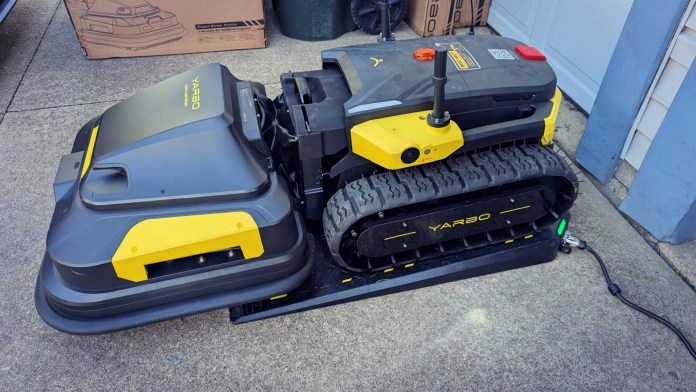
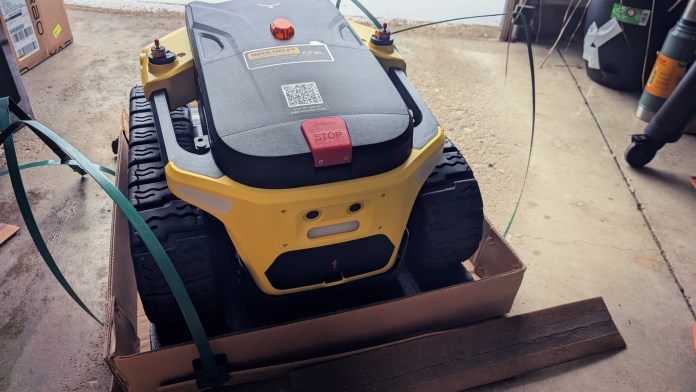
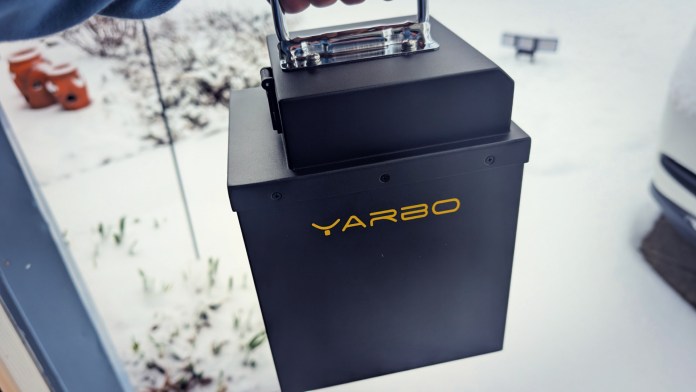
One of my biggest problems with maintaining my lawn is finding the right balance of time and availability, and then making sure the weather is nice enough. In March and April that’s a big ask but things do even out a bit come May. I’m excited at the prospect of getting sections of my yard in between rainfall and/or having it run in a light drizzle when I don’t want to be outside.
Battery Life and Charging
Battery life depends on the module and workload. The Core runs about four hours per charge. The Snow Blower gets roughly 90 minutes while the Blower Module nets about 70 minutes. The Lawn Mower should land around 3.5-5 hours but I suspect I’ll not come near that with the size of my yard. Charging is wireless via the dock, which feels like a little magic every time it works.
For the first few months I was content to drive the unit back into my garage and plug it in manually. Once the weather started to break, and I was able to clean the garage out a bit, I opted for that handy charging mat/dock. The dock comes with a number of long screws to ensure it does not go anywhere or slide around as the Yarbo returns to charge up.
What About the Price?
Let’s talk dollars. The Core costs around $5,700. Modules look to be priced from about $1,100 on up with bundles available if you want to snag a few items at once. The Snow + Lawn combo runs about $8,700, while the full 4-in-1 system is closer to $9,700.
Current Pricing on Yarbo’s Website
Here are a few bundled options to consider, with their pricing as of late April.
| Yarbo Lawn Mower + Blower ($8,000) | Yarbo Snow Blower + Blower ($8,400) | Snow Blower + Lawn Mower $8,700 | 4-in-1 Yard Robot $9,700 |
|---|---|---|---|
| Yarbo Core Yarbo Blower Module Yarbo Lawn Mower Module |
Yarbo Core Yarbo Blower Module Yarbo Snow Blower Module |
Yarbo Core Yarbo Snow Blower Module Yarbo Lawn Mower Module |
Yarbo Core Yarbo Lawn Mower Module Yarbo Snow Blower Module Yarbo Blower Module |
Note: The bundles include a Yarbo battery, docking station, smart assist module, data center, and remote controller set.
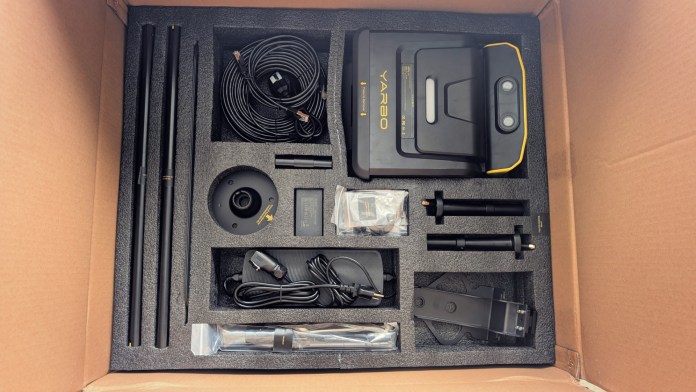
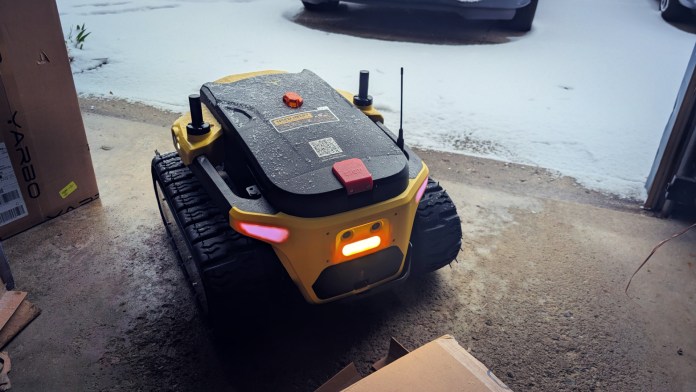

That’s a lot, no doubt. But if you’re someone who already owns (or pays for) multiple seasonal machines, or might be aging out of dealing with heavy manual yard work, it starts to make more sense. There’s something to be said for consolidating multiple tools into one smart system that can grow with software and hardware updates.
I did some quick shopping for a new snowblower with similar features and found that I’m looking at $1,200 or more for one. Factor in a blower of around $200, a minimum of $2,000 for a riding mower, and you’re already facing down $4,000.
Now, consider how much your time is worth. Let’s say it takes you two or so hours a week to mow and that your time is valued at just $25 per hour. Toss in gas and oil, cleanup and showering after, and that’s got to be $300 or more per month, or $1,500 – $1,800 for a summer.
Come winter, one might value that time even higher, so shoveling snow could be valued at $1,000 over a winter. Repeat this a year or two and you can truly start to see the value. Got a lawn guy or a person to plow your driveway? You might actually be paying more.
Then there’s the space savings, too.
Support and Warranty
The Core and most modules come with a 2-year warranty, while the Blower gets three years. I reached out to support twice, and both times got fast, helpful replies. That kind of service matters, especially with a premium product like this.

While we may not get to spend extensive time with every product that crosses our path, we know a good thing when we see it.
First-Rate Find is our way of recognizing products that go beyond high standards in performance, design, value, and/or innovation while bringing something unique to the table. In short, they definitely are worth your attention.
The Bottom Line so Far
Would I recommend the Yarbo and/or its bundles? If you’re tech-savvy, have a decent-sized yard, and want to reduce the time and effort you put into outdoor maintenance, it’s a compelling solution. It’s not perfect as setup has a learning curve, and module swaps can feel a touch cumbersome, but the overall experience has been positive.
There’s a certain thrill in watching a machine take over your least favorite chores. I’ve shoveled snow, mowed lawns, and raked leaves for years. Now, I have the ability to just supervise with very little human touch. So yes, it’s an investment. But, to me, the time and energy saved seem like they are more than worth it.
